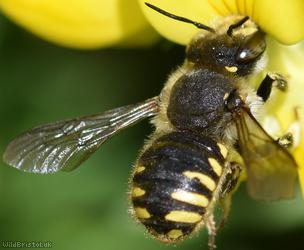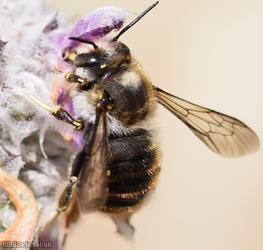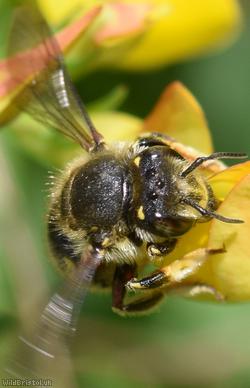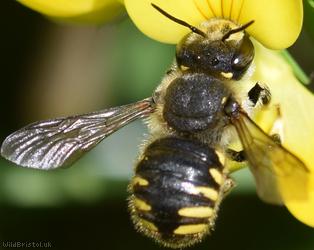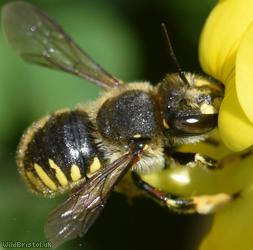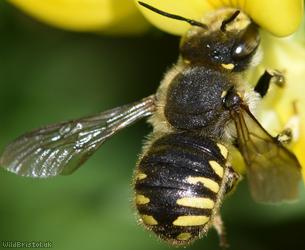Wool Carder Bee - Anthidium manicatum subsp. nigrithorax
Favourite Photos
Species Description
The bee from Mainland Britain.
Widespread and locally common throughout England and Wales, expanding into Southern Scotland. A few recent records have occurred in Ireland. Habitat includes: meadows, soft-rock cliffs, heathland, wasteland, coastal dunes, gardens, parks, allotments, churchyards etc. Life story: Large males vigorously defend patches of favoured flowers and will intercept, chase off and even kill any other insect that enters their territory (crushing them between their abdomen and thorax). Females however are allowed to visit the flowers as it is here that mating takes place. Nesting occurs in pre-existing cavities in walls, cliff faces, dead wood, hollows stems, burrows in the ground etc. The cells are lined with fibres obtained from the surface of woolly leaves such as Lamb's-ear, Great Mullein and Common Fleabane.
The cell walls and closing plug of the nest are fashioned from compacted layers of long, silky hairs which are shaved off leaves by the female's multi-dentate mandibles. Favoured plants are Lamb's-ear (Stachys byzantina), Yarrow (Achillea millefolium), Great Mullein (Verbascum thapsus), Common Fleabane (Pulicaria dysenterica), Pelargoniums, Cotton Thistle (Onopordum acanthium), House-leek's (Sempervivum). Hairs are brought to the nest site in a ball and applied to the inner surface of the cavity by teasing them out with the mandibles; the gaster (thickened part of the abdomen) is then used to tamp down the hairs to help knit them together.
Flight period: Late May to Early July (peaking from June to July). Flowers visited: Mainly members of the Lamiaceae family such as Black Woundwort, Wild Basil and Fabaceae such as Bird's-foot trefoils, Kidney Vetch etc. I have also recorded females visit Common Fleabane.
